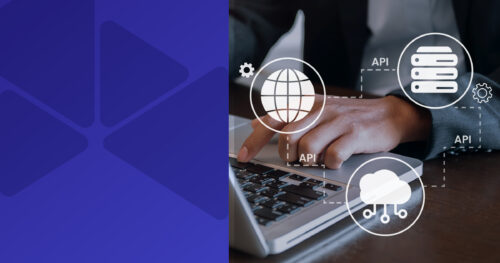Computer systems, programming languages, specific processes and technologies lose their relevance over time. Software developed some time ago that resolved problems efficiently then may no longer correspond to business needs.
Legacy systems based on obsolete technologies have monolithic architecture and are hard to change.The most common are COBOL, Visual Basic, Borland Delphi, RPG/400, and technologies such as Oracle Forms.
Old IT systems aren’t able to adapt to the modern business environment and might eventually become incompatible with current systems and platforms. Legacy code makes moving quickly impossible, resolving issues difficult, and troubleshooting applications expensive. Thus, it might be crucial for your business development to move away from legacy IT.
We listed some of the most common issues with legacy systems:
- Over time, performance becomes slower and slower, and more failures occur. The user experience can suffer from low efficiency and productivity, and a poor user interface.
- Legacy systems are inflexible. It can be hard and time-consuming to add new functions or update existing ones. Connecting the old system to third-party tools and services requires a lot of effort due to low compatibility with new systems.
- The legacy system can be unstable due to lack of support and maintenance. In turn, system support just to keep it operating requires increasing financial investment. Finding qualified staff also can be difficult, as fewer programmers are capable of working with outdated technologies.
- Legacy systems are vulnerable to hacker attacks and data leaks, because they’re using old security protocols and standards. They also don’t comply with modern regulations for storing, using and protecting data.
The system doesn’t need to be that old to be considered legacy. Any IT system can fit that definition if it has the traits stated above.
Why do companies still use legacy software?
Legacy systems usually power crucial business processes. Migrating to new technology can be burdensome and messy. And companies don’t want to threaten the stability of their core applications.
Their main fears are related to:
- High migration costs: lack of technical specifications can make the process long and expensive.
- Skills gap: finding a reliable, qualified team and choosing a suitable migration approach is difficult.
- Risk of losing or corrupting key data during the migration process.
Companies must take into account downtime while transitioning to new software. During this period, productivity can decrease. Changes also will require employees and other stakeholders to learn and adapt to new workflows.
Who still uses legacy systems?
Many companies and organizations are still relying on legacy software systems for their core business operations, such as high-volume data processing or conducting day-to-day operations.
Government
Most government legacy systems are massive and monolithic and contain tons of information about the population, such as taxes, pensions, health cards and much more, that needs to be stored and processed properly. Fragmented, complex architecture where data is stored in multiple systems increases security risks. Security and trust are essential for system users.
Government provides a large number of citizens with support and services and needs to adapt to online and on-demand requirements. But in reality, government systems tend to be slow, complex, inflexible and user-unfriendly. Outdated systems are not compatible with modern technologies, such as augmented analytics and intelligent automation, that can improve the work of government employees and increase the level of satisfaction among citizens using them.
System failures present a crisis; they may lead to missed benefits payments, delays in service, and other problems that restrict access to government resources that citizens depend on.
Banks
Legacy banking systems can’t handle growing data exchanges and transactions or automatically convert data into a machine-readable form, which is essential for machine learning operations. But the most crucial issue is related to fraud detection, prevention technology and security assurance. Banks need to upgrade legacy systems with security controls components that correspond to modern standards.
The rapid growth of FinTech and digital payment systems has become another challenge for legacy banking systems. Today, customers want 24-hour access to their finances and to be able to conduct financial transactions on various devices, to make payments instantly. They expect mobile or internet banking applications with simple and clear user flow. Legacy systems often work badly on mobile devices and have outdated interfaces.
Moreover, legacy software shows slow performance and long transaction processing times. It can be frustrating not only for clients, but also for employees, creating a negative experience when dealing with a bank’s digital ecosystem. Banks often have fragmented data architecture that prevents digital transformation and, as a result, hinders them from delivering a better customer experience.
Retail
The traditional physical retail scenario is quickly transforming into a digital one. Customers now expect to get personalized and omnichannel customer experiences. Retailers need to adapt to the on-demand model. It’s a hard task to integrate a legacy system with, for example, a new CRM or live chatbot.
The operational speed is slow, it takes time to perform a standard task, and system failures occur during operations. These factors frustrate customers, reduce website traffic and damage the brand image.
Customers can buy from lots of different channels, whether in a physical store or online. Either way, logistics and the order process are crucial elements. Retail software needs to sync inventory positions across multiple systems to get real-time stock information and allow the retailer to manage flows.
Insurance companies
In legacy systems, insurance core system operations, from billing and claims to reporting and analysis, are built around policy records, not customer records. In addition, legacy manual processes lead to errors involving data entry. A more customer-centric approach requires technical solutions such as data lakes, MDM projects and CRM applications, and implementing straight-through processing with automation and self-service opportunities.
The pandemic has revealed one more issue. Many insurance companies are still using on-premises legacy systems that can’t provide secure and seamless remote access to employees.
Insurtech startups that offer customers a personalized digital experience are gaining an increasing market share. Customers want easy access to guidance, services and purchasing options, anytime and anywhere.
Logistics
Logistics legacy software can’t manage real-time data flows and doesn’t have advanced analytics systems. Decision-making when it comes to production, inventory and transportation can be manual, and therefore may suffer from the lack of system support. Not all components of the system are compatible and able to transfer data from one part to another in a readable format.
Logistics companies or departments using legacy systems have to manage multiple data streams from individual systems to see what’s going on across the total supply chain. Meanwhile, their clients are looking for one source of transparent data, with access to complete and accurate information at any time. They need a solution that drives data from multiple sources to a single control platform that can provide visibility to the entire supply chain.
Tools to modernize a legacy system
What was once a perfect solution eventually becomes outdated and inefficient. The process of migration means porting your legacy system to a modern technology stack, libraries, frameworks and protocols. We can suggest 4 possible approaches to modernize your old system.
Approach 1. Cloud solutions
Legacy systems can be migrated to the cloud or replaced with a cloud-based solution. Cloud solutions help reduce operating costs by streamlining automated processes and information and data storage, and allow you to implement new features much more quickly. You will get a scalable and flexible system with the opportunity for automatic updates.
Security issues are resolved with data encryption and multilevel authorization. Also, cloud-based solutions are compatible with 3-d party integrations.
Examples of cloud services:
- SaaS – Google Workspace, Dropbox, Salesforce, Cisco WebEx, Concur, GoToMeeting
- PaaS – AWS Elastic Beanstalk, Windows Azure, Heroku, Force.com, Google App Engine, Apache Stratos, OpenShift
- IaaS – DigitalOcean, Linode, Rackspace, Amazon Web Services (AWS), Cisco Metapod, Microsoft Azure, Google Compute Engine (GCE)
Approach 2. Automation
Legacy systems lack automation for the majority of repetitive tasks. RPA-automation is an effective solution, with no need to disrupt the old application and workflow as a whole. This approach helps to automate labor-intensive, rules-based, repeating tasks and to lessen errors and operational costs. More concretely, it can handle back-office operations and customer service.
RPA can ensure robust security and data consistency when starting with a legacy system. It is more flexible and faster to deploy than APIs or integration platforms.
Examples of RPA tools: Keysight’s Eggplant, Inflectra Rapise, Blue Prism, UiPath, Automation Anywhere, Pega.
Approach 3. Container-based architecture
Parts of the legacy system that are able to run independently can be deployed as separate containers. The number of containers can vary from the most simple to a complex kit. If minor changes are made in the first case, then in the second case the system needs refactoring and even recoding. The main principle of a container-based architecture is lightweight components with specified properties of availability or scalability.
Also, it should be considered that most legacy applications require state management and data persistence. Those parts that manage states can be transformed to containers using the additional mechanism.
Container-based solutions can be built with the help of the following software and cloud services: Kubernetes, Docker, Apache Mesos, Amazon ECS, Microsoft Containers.
Approach 4. Microservice architecture
This approach enables service deployment without rebuilding the entire legacy system. The system is decoupled for a number of components with separate codebases, which communicate with each other through APIs. You get modular composite architecture that is flexible enough for updates and integrations. Each unit can be scaled independently, which is more time- and cost-effective.
This is a good choice for high-load systems. Microservice architecture enables improved system stability, data security, and maintenance. It is highly cohesive, autonomous and business-domain focused.
Conclusion
Legacy system evolution involves a long journey that requires deep expertise and mature processes. Finding a reliable IT partner is extremely beneficial to a smooth transition. The DigitalMara team has strong experience dealing with legacy systems. We can help you to choose the most suitable approach based on your business goals and requirements and use cases.
Just write to us to get your free quote.


































